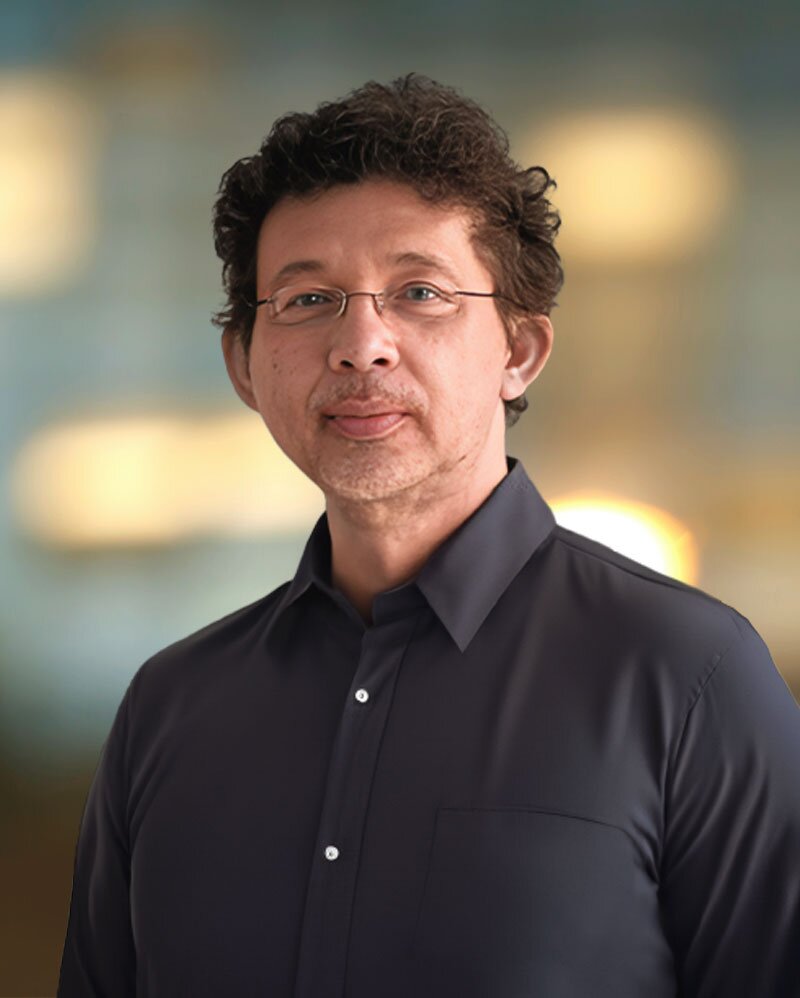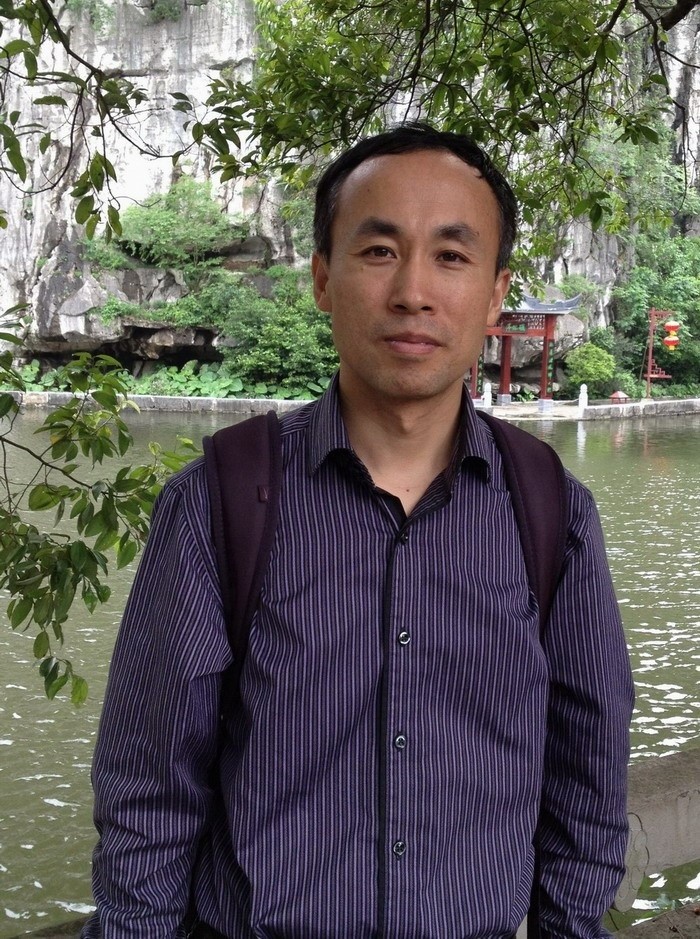
Speakers
| Prof. Harith Ahmad, University of Malaya, MalaysiaFellow, Academy of Sciences, Malaysia Professor Datuk Dr Harith Ahmad FASc obtained his in BSc in Physics with First Class Honours from the University of Malaya in 1979. Subsequently, he obtained his MSc from the University of Wales in 1980, followed by his PhD in 1983 from the same institution. Upon returning to Malaysia in 1983, he became a member of the academic staff of UM, and since then has led the university’s research into the area of photonics. He is currently a Distinguished Professor, and is also the director of the Photonics Research Centre of the University of Malaya, a Higher Education Centre of Excellence (HiCoE) under the purview of the Ministry of Education, Malaysia (MOE). His substantial contributions in the area of photonics has been acknowledged with multiple awards and recognitions, including as a Fellow of Akademi Sains Malaysia and recipient of the Malaysia-Toray Science Foundation Award, Merdeka Award for Scholastic Achievement and ASEAN Outstanding Scientist and Technology Award. He is very active as both a researcher and an academician, with numerous ISI ranked research publications to his name, as well as supervising numerous undergraduate and postgraduate students in photonics. Title: Interest in High-Power Fiber Laser for Certain Applications Abstract: Of late, there has been great interest in high-power fibre lasers with numerous applications. In this presentation, a detailed discussion will be put forward on high-power fibre lasers at the 1 and 2 µm regions. These wavelengths have many interesting applications, especially at 1 µm for laser writing, precision machining, and drilling. This presentation will highlight the design features of ultrashort pulse generation at 1 μm. Technologies such as using SESAMs, NPRs, and real nano materials (2D and 3D materials) will also be discussed. The high-power, ultrashort laser systems consist of an oscillator, a pre-amplifier, and a main amplifier. Recent results of this system will also be presented, and examples and applications will be discussed. At the end of the wavelength spectrum, there is a 2-µm ultrafast high-power fiber laser. This laser plays an important role in medical science. The detailed design of the laser will be presented, which consists of an oscillator that is amplified by two pre-amplifiers and then by a main amplifier. The specifications of this system give outputs of an average output power of 5 W, a pulse width of less than 500 fs, and variable output repetition rates. Also in the presentation, certain applications in medical science, such as laser surgery, the blasting of kidney stones, and the removal of cancerous tumors, will be shared. |
Prof. Zhilin Xia, Wuhan University of Technology, ChinaProf. Xia Zhilin is currently a researcher in the Department of Metal Materials Engineering, School of Materials Science and Engineering, Wuhan University of Technology. His main research interests include optical materials and optical components, utilization and management of light and heat, and interaction between laser and matter. Xia Zhilin currently presides over a number of scientific research projects, including the National Natural Science Foundation and key projects of the Basic Strengthening Program. He has published nearly 100 papers in journals such as Nature Communications, ACS Applied Materials & Interface, ACS Photonics and Optical Express. His research fields cover the service performance of optical components in extreme environments, materials and technologies for photothermal management, and the interaction between laser and matter. Title: IHigh-Intensity Laser-Matter Interactions Abstract: Lasers possess characteristics such as high energy density, high monochromaticity, and high coherence. When interacting with matter, they produce phenomena like absorption, reflection, scattering, and diffraction, and induce effects such as thermodynamic effects, plasma effects, nonlinear optical effects, particle acceleration effects, and relativistic effects. The research on the mechanisms and processes of laser-matter interaction serves as the foundation for the development of basic physics, laser technology, and its popularization and application. Starting from the physical processes of laser-matter interaction, this report analyzes existing research achievements as well as the opportunities and challenges. Its content covers physical mechanisms and processes such as the deposition, transformation, and diffusion of laser energy in matter, along with the resulting physical mechanisms and processes of plasma effects, thermodynamic effects, etc. The report focuses on reflections on existing theoretical achievements and prospects for existing problems, hoping to arouse the research interest of young scholars. |
|
| Prof. Dongping Zhang, Shenzhen University, ChinaZhang Dongping, PhD, master supervisor, Professor of School of Physics and Optoelectronic Engineering, Shenzhen University, Deputy Director of Shenzhen Key Laboratory of Advanced Thin Films and Applications, director of Film and Coating Branch of Chinese Silicate Society, member of China Surface Equipment Special Committee, Secretary General of Shenzhen Vacuum Society, director of Shenzhen High-level Talents Association. He has won the titles of "Thousand and ten Talents" in Guangdong Province, "Local Leading Talents of High-level Professional and Technical Talents" in Shenzhen City, "Excellent Teachers in Shenzhen City", and the first "Outstanding Scholars of Shenzhen University". Currently, he is mainly engaged in the research work of photoelectric functional films and applications. Presided over the completion of a number of scientific research projects of the National Natural Science Foundation, and actually participated in the research and development of key thin film components of national scientific devices. He has published many papers in domestic and foreign journals as the first author or corresponding author. Title: Fabrication of High-Quality VO2 Thin Films and Related Optoelectronic Devices Research Abstract: VO₂ exhibits a reversible semiconductor-to-metal phase transition (SMT) near room temperature, accompanied by abrupt changes in optical, electrical, and other physical properties. This phase transition can be triggered by thermal, electrical, or laser stimuli, endowing it with broad application prospects in novel tunable optoelectronic thin-film devices. In this report, the fabrication techniques on high-quality VO₂ thin films via pulsed reactive magnetron sputtering in our group are first introduced, including buffer layer-induced growth, ultrathin layer annealing doping, and ion beam post-treatment modification. Based on the high performance VO2 films, we developed some type of VO2-based ultrafast optical switches, optical detector, and terahertz wave modulators. |
Prof. Liyun Ding, Lanzhou University, ChinaDing Liyun, professor, PhD supervisor, winner of Hubei Outstanding Youth Fund (2021). Since 2022, he has been a professor at the School of Physical Science and Technology of Lanzhou University, and a researcher at the National Engineering Research Center of Optical Fiber Sensing Technology and Network of Wuhan University of Technology from 2015 to 2022. He has been engaged in basic research and industrial transformation of optical sensitive nanocomposites, sensing technology theory, optical fiber chemistry and biosensors for a long time, and his research fields involve interdisciplinary subjects such as physics, materials, microelectronics and medicine. Deputy Director of Gansu Key Laboratory of Functional Genome and Molecular Diagnosis, and member of chinese optical society Optical Testing Committee. He has published more than 100 high-level academic papers, including biosensors & bioelectronics, sensors and actuators B-chemical, ACS applied materials & interfaces and other Top journals in the field of biochemical analysis and sensors. Title: Next-generation intelligent early screening and diagnosis system for kidney injury based on optical fiber sensors Abstract: Renal Ischemia-Reperfusion Injury (IRI) refers to acute kidney damage caused by ischemia, hypoxia, shock, or disseminated intravascular coagulation (DIC). It commonly occurs during kidney transplantation, severe trauma, or partial nephrectomy. The early clinical manifestation is acute kidney injury (AKI), characterized by renal tubular epithelial damage and water-electrolyte imbalances. Although IRI is often reversible, timely detection and dynamic monitoring of renal function are crucial for early intervention, minimizing kidney damage, and preserving or improving renal function. Clinical studies have shown that monitoring biomarkers such as blood/urine β2-microglobulin, oxygen partial pressure, urinary glucose, and uric acid plays a significant role in the early diagnosis of kidney injury. However, current clinical detection methods for these biomarkers suffer from long processing times, low accuracy, high misdiagnosis rates, and reliance on large, sophisticated equipment, lacking precise bedside measurement techniques. Fiber-optic biosensing technology, as a next-generation detection method, offers high sensitivity, compact size, real-time in vivo monitoring, and rapid response, demonstrating immense potential in biomedical diagnostics. To address the current challenges in kidney injury diagnosis, our research team has developed a highly sensitive multi-parameter fiber-optic biosensor capable of simultaneously and rapidly quantifying β2-microglobulin, oxygen partial pressure, glucose, and pH levels in blood and urine. By optimizing sensor design and implementing intelligent signal enhancement mechanisms, this system enables dynamic monitoring of pathological changes across different stages of IRI, establishing a novel early multi-parameter diagnostic framework to improve the detection rate and diagnostic accuracy of AKI. This innovative diagnostic system not only facilitates early AKI diagnosis and personalized treatment—enhancing patient survival rates and quality of life—but also advances the application of fiber-optic biosensing technology in biomedical monitoring, driving progress in precision medicine and health management. |  |


